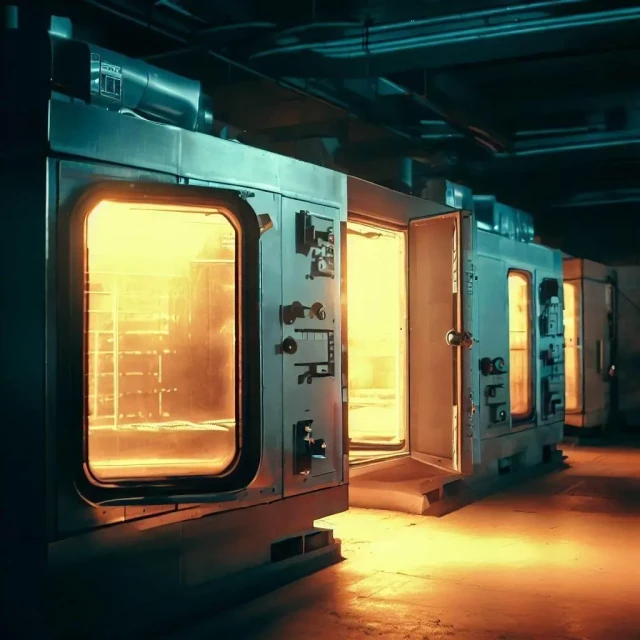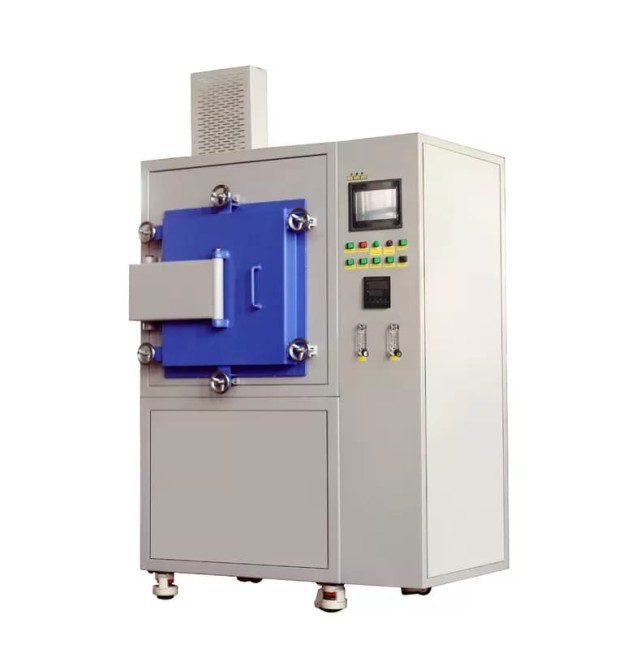Introduction to Inert Atmosphere Ovens
Inert atmosphere ovens are designed to create a controlled environment that is free of oxygen and moisture. This is achieved by using an inert gas, such as nitrogen or argon, to displace the oxygen and create an inert atmosphere. Inert atmosphere ovens are commonly used in research and development settings where the materials being tested are sensitive to oxygen or moisture. They are also used in industries such as aerospace, pharmaceuticals, and electronics. Inert atmosphere ovens offer several benefits, including improved product quality, reduced oxidation, and increased product lifespan.
Table of Contents
Benefits of Using Inert Atmosphere Ovens
Inert atmosphere ovens are essential laboratory equipment used in various industries like pharmaceuticals, food, and chemical manufacturing. They help create a controlled environment for research and testing applications. Here are some of the benefits of using inert atmosphere ovens:
Improved Accuracy and Reliability of Experimental Results
Inert atmosphere ovens prevent unwanted reactions between materials under test and the ambient air by replacing the air in the chamber with a non-reactive gas like nitrogen or argon. This provides a stable and inert environment that can help to improve the accuracy and reliability of experimental results.
Customizable Options
Inert atmosphere ovens are highly customizable, with a variety of options available for temperature range, chamber size, and gas control. This means that researchers can choose the specifications that best suit their research needs.
Prevents Reactivity
Inert atmosphere ovens are ideal for conducting experiments with materials that are sensitive to oxygen or moisture, as they can prevent these substances from reacting with the sample. This helps to maintain the integrity of the sample being tested.
Controlled Environment
Inert atmosphere ovens offer the ability to control the temperature, humidity, and gas composition within the chamber. This means that researchers can create a controlled environment that mimics real-world conditions, which is essential for testing and research.
Multiple Applications
Inert atmosphere ovens have a wide range of applications, including annealing, brazing, and heat treatment of materials that are prone to oxidation. They are also used for bonding, curing, and heat treating.
Cost Savings
Using inert atmosphere ovens can help researchers save money by preventing the need for repeat experiments due to inaccurate or unreliable results. The ability to control the environment and prevent unwanted reactions helps to ensure that experiments are successful the first time.
In conclusion, inert atmosphere ovens are essential laboratory equipment that offer a range of benefits for researchers. They improve the accuracy and reliability of experimental results, are highly customizable, prevent reactivity, offer a controlled environment, have multiple applications, and can help to save costs. Researchers should consider using inert atmosphere ovens for their research and testing applications to improve the quality and accuracy of their results.
Types of Inert Gases Used in Ovens
Inert atmosphere ovens are designed to maintain a controlled environment that is free of oxygen and other reactive gases, which can alter the results of experiments. The use of inert gases in these ovens is crucial to creating a stable and controlled atmosphere for the samples. Inert gases are gases that do not readily react with other substances, making them ideal for use in these ovens. The most commonly used inert gases in these ovens are nitrogen, argon, and helium.

Nitrogen
Nitrogen is the most commonly used gas in inert atmosphere ovens due to its abundance and low cost. It is typically used at temperatures below 1800°C and displaces oxygen, making it ideal in situations where oxidation is undesirable. Nitrogen is not a noble gas and can react with oxygen under specific conditions to form gases such as nitric oxide (NO) and nitrogen dioxide (NO2). These gases are collectively referred to as NOx gases.
Argon
Argon is another inert gas used in these ovens and is preferred for high-temperature applications. It has a high thermal conductivity and can penetrate small spaces. It is a completely inert "noble" gas and will not react with any material it comes into contact with. Argon is more expensive than nitrogen, but it can be used at temperatures above 1800°C without any risk of reaction.
Helium
Helium is used in applications where the sample requires a very low-pressure environment. It is an inert gas that does not react with other substances and is therefore ideal for maintaining a stable and controlled atmosphere in ovens. Helium is also used in gas chromatography and mass spectrometry.
The choice of inert gas used in these ovens depends on the nature of the sample being tested and the desired environment. It is essential to carefully select the type of inert gas to ensure accurate test results and avoid contamination. In conclusion, understanding the different types of inert gases used in ovens is crucial in creating a stable and controlled environment for samples.
Applications of Inert Atmosphere Ovens
Inert atmosphere ovens provide a controlled environment for processing materials or conducting experiments. These ovens are designed to create an oxygen-free, or inert, atmosphere to prevent oxidation or contamination of the sample being processed. Here are some of the applications of inert atmosphere ovens:
Heat Treatment of Metals
Inert atmosphere ovens are commonly used for heat treatment of metals. Heat treatment processes like annealing, carburizing, and quenching require high temperatures in an oxygen-free environment to prevent oxidation and improve the material's mechanical properties.
Curing of Polymers
Polymers require specific conditions to cure properly. Inert atmosphere ovens provide the controlled environment required for the curing process to take place. The controlled environment prevents any unwanted reactions and ensures that the polymer cures uniformly.
Drying, Sterilization, and Stability Testing in Pharmaceutical Industry
The pharmaceutical industry uses inert atmosphere ovens for drying, sterilization, and stability testing of drugs and other materials. These processes require temperature and humidity control, and an inert atmosphere oven is the perfect equipment to provide these conditions.
Production of Dehydrated Food Products
In the food industry, inert atmosphere ovens are used for the production of dehydrated food products such as fruits, vegetables, and meat jerky. The controlled environment provided by the oven prevents oxidation and contamination of the food products during the dehydration process.
Testing Durability of Materials in Research Laboratories
Research laboratories use inert atmosphere ovens for testing the durability of materials such as ceramics. The controlled environment allows for precise control of the testing conditions and ensures that the materials are not affected by any environmental factors.
Creating Controlled Environments for Chemical Reactions
Inert atmosphere ovens are also used in research laboratories for creating controlled environments for chemical reactions. The controlled environment allows for precise control of the reaction conditions, which is crucial in many research applications.
Overall, inert atmosphere ovens are critical tools in many fields, and their use ensures that the quality and reliability of materials and products are maintained. The applications of these ovens are vast and varied, ranging from heat treatment of metals to curing of polymers and production of dehydrated food products.
How to Create an Inert Atmosphere
Creating an inert atmosphere is an essential step in using inert atmosphere ovens for scientific research. Here is a step-by-step guide on how to create an inert atmosphere in an oven:
Step 1: Purge the oven with an inert gas
The first step in creating an inert atmosphere is to purge the oven with an inert gas, such as nitrogen or argon. This is done to remove any residual air from the oven, which could react with the material being studied. The inert gas is introduced into the oven through a valve, and the air is forced out through an exhaust valve until the oxygen level is below 1%.
Step 2: Circulate the inert gas
After purging the oven, the inert gas is continuously circulated to maintain the desired level of purity. The gas is circulated using a fan or blower, which creates a flow of gas throughout the oven. This helps to maintain a consistent environment and prevent the buildup of any reactive gases.
Step 3: Monitor the temperature and pressure
To ensure that the environment remains stable, the oven's temperature and pressure are closely monitored. The temperature is controlled using a temperature controller, which maintains the desired temperature by adjusting the heating elements. The pressure is monitored using a pressure gauge, which indicates the pressure inside the oven. The pressure is usually kept slightly above atmospheric pressure to prevent air from entering the oven.
Step 4: Follow safety protocols
When working with inert atmosphere ovens, it's important to follow strict safety protocols to prevent accidents. Always wear appropriate protective gear, such as gloves and goggles, and follow proper procedures for handling and transferring materials. It's also important to be aware of the potential hazards associated with inert gases, such as asphyxiation, and to take appropriate precautions to prevent exposure.
Creating an inert atmosphere is a crucial step in using inert atmosphere ovens for scientific research. By following these steps and taking appropriate safety precautions, researchers can create a controlled environment that allows them to study the properties and behavior of materials and compounds under specific conditions.
KINTEK's Solutions for Inert Atmosphere Ovens
Inert atmosphere ovens are essential for research in various fields such as materials science, chemistry, and nanotechnology. KINTEK, a leading laboratory equipment manufacturer, offers a range of solutions for inert atmosphere ovens. Their ovens are designed to provide precise temperature control and uniform heating throughout the chamber, ensuring accurate and reproducible results.
Customization Options
KINTEK's ovens feature a variety of safety features such as over-temperature protection and gas monitoring systems to ensure the safety of researchers and their experiments. Additionally, KINTEK offers customization options to meet the specific needs of their clients. With their extensive experience and expertise in the field of laboratory equipment, KINTEK provides reliable and efficient solutions for researchers requiring inert atmosphere ovens.
Atmosphere Control
KINTEK's solutions for inert atmosphere ovens focus on atmosphere control. These atmospheres include flammables and toxic gases – hydrogen, nitrogen, argon, air, oxygen, ethylene, methane, CO2, CO, chlorine gas. KINTEK offers the unique ability to accommodate a variety of process atmospheres. Their excellent seal designs and focus on atmosphere control includes system integration of atmosphere recycle systems, off-gas abatement systems, and controlled atmosphere mixing for tailored process control.
Process Scale-Up
KINTEK's expertise in process scale-up allows for designs to accommodate mass rates from tens to thousands of pounds per hour. They offer a contained processing environment with multi-atmosphere, long residence time systems and designs for traditional residence time at high production rates.
In conclusion, KINTEK's solutions for inert atmosphere ovens are comprehensive and customizable, making them a reliable and efficient choice for researchers requiring inert atmosphere ovens. They offer atmosphere control, rotary tube furnaces, high purity material processing, custom vacuum furnaces, and process scale-up expertise.
Conclusion
Inert atmosphere ovens are valuable tools in laboratory research and processing. They provide a controlled environment free of oxygen, water vapor, and other reactive substances that could potentially alter the outcome of experiments. By utilizing inert gases such as nitrogen, argon, and helium, researchers can achieve consistent and reliable results in their work. KINTEK offers a range of solutions for inert atmosphere ovens, including custom designs and modifications to suit specific needs. Overall, inert atmosphere ovens are a wise investment for any laboratory seeking to improve the accuracy and reproducibility of their research.
Related Products
- 1200℃ Controlled Atmosphere Furnace Nitrogen Inert Atmosphere Furnace
- Controlled Nitrogen Inert Hydrogen Atmosphere Furnace
- 1400℃ Controlled Atmosphere Furnace with Nitrogen and Inert Atmosphere
- 1700℃ Controlled Atmosphere Furnace Nitrogen Inert Atmosphere Furnace
- Laboratory Vacuum Tilt Rotary Tube Furnace Rotating Tube Furnace
Related Articles
- How Controlled Atmosphere Furnaces Improve Quality and Consistency in Heat Treatment
- The Benefits of Controlled Atmosphere Furnaces for Sintering and Annealing Processes
- Hydrogen Atmosphere Furnaces: Applications, Safety, and Maintenance
- Controlled Atmosphere Furnace: Comprehensive Guide to Advanced Heat Treatment
- The Silent Saboteur in Your Furnace: Why Your Heat Treatment Fails and How to Fix It














